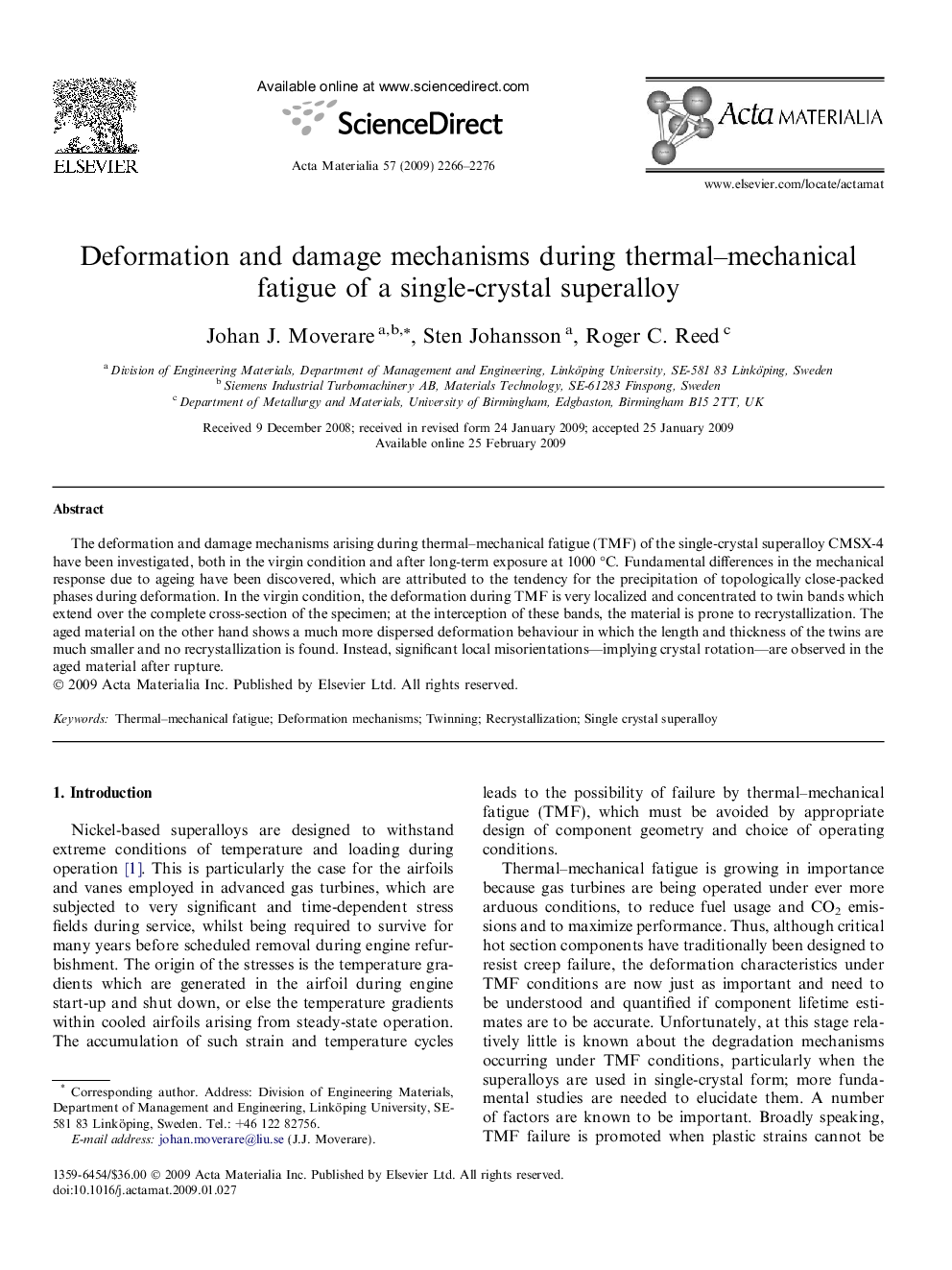| Article ID | Journal | Published Year | Pages | File Type |
|---|---|---|---|---|
| 1448607 | Acta Materialia | 2009 | 11 Pages |
The deformation and damage mechanisms arising during thermal–mechanical fatigue (TMF) of the single-crystal superalloy CMSX-4 have been investigated, both in the virgin condition and after long-term exposure at 1000 °C. Fundamental differences in the mechanical response due to ageing have been discovered, which are attributed to the tendency for the precipitation of topologically close-packed phases during deformation. In the virgin condition, the deformation during TMF is very localized and concentrated to twin bands which extend over the complete cross-section of the specimen; at the interception of these bands, the material is prone to recrystallization. The aged material on the other hand shows a much more dispersed deformation behaviour in which the length and thickness of the twins are much smaller and no recrystallization is found. Instead, significant local misorientations—implying crystal rotation—are observed in the aged material after rupture.
